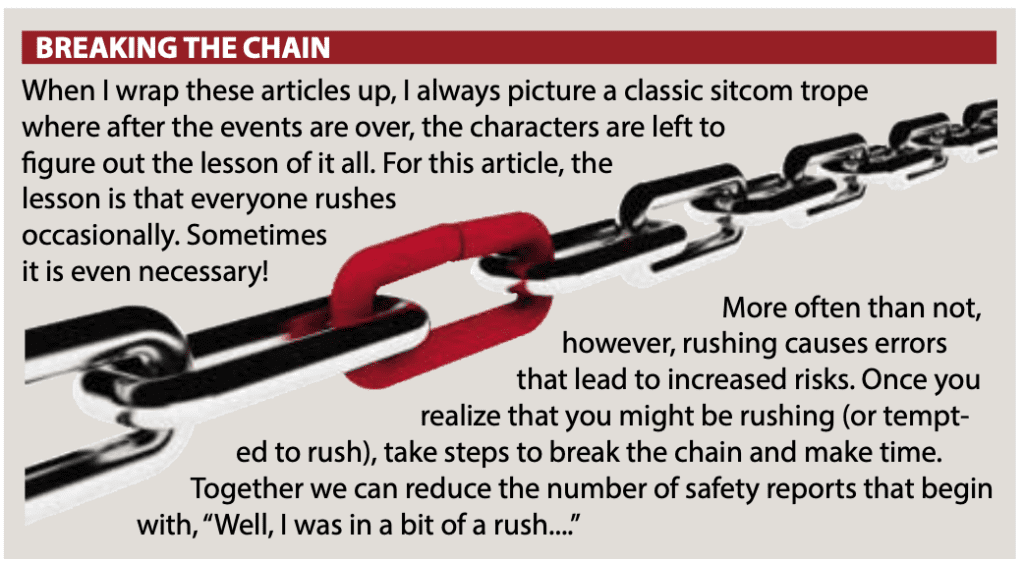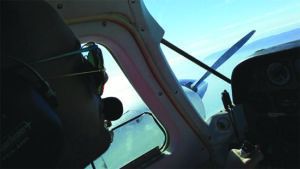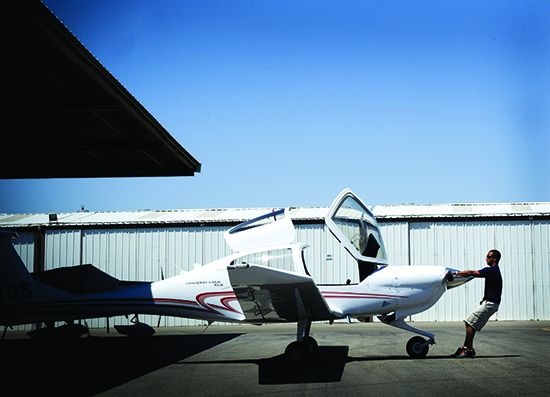A few months ago, I was assigned an empty flight to take a plane to a maintenance center and return. What an opportunity! Two empty legs? An overnight in a neat city? Sounds like a free family vacation! I made sure it was all above board with the company and planned everything out. It was my first time flying the family since my son was born. Seeing as I was a professional pilot, I figured the various external pressures would not affect me any more than being tasked with transporting the flying public.
It ended up being the opposite. I was thrown off my routine, distracted trying to help the family while completing all my preflight duties. Combine all that with pressure to drop the plane off by a certain time and I consciously recognized that I was feeling rushed.
LINK IN THE CHAIN
Rushing through a task often is cited as an early link in the accident chain, a controllable factor that causes checklists to be missed, briefings to be brushed over and errors to occur. Obviously there is a schedule to keep, which creates inherent pressure to get moving. But by and large, the need to rush simply does not exist. If there is nothing out of the ordinary such as a maintenance issue, weather or late boarding, then it is extremely easy to be ready to go when the time comes. When there is another factor, the expectation is that the pilot in command will incur any delay necessary to maintain the highest level of safety. Pilots in these situations often tell other employees “put the delay on me” because pilots should not be forced to answer to management if a delay occurs. So, why do we put this pressure on ourselves to rush, when we know it causes errors and frequently saves so little time that it hardly matters?
TO RUSH IS HUMAN
Rushing can be described as a response that occurs when there is a perceived mismatch between a person’s capabilities and the demands of a particular task or situation. In other words, people may rush when they feel like they do not have enough time, resources or cognitive ability to complete a task successfully.
As licensed or even student pilots, I know everyone reading this is cognitively capable of successfully completing the task of flying, or they would not have been signed off or given the privileges they currently hold. Plus, you are reading this magazine. You’re probably in the upper echelon of pilots based on that alone. But there are a few other factors.
Time/Schedule Pressure: This type of pressure should be acknowledged and viewed as a threat. If one is pressed for time due to weather, sunset or just something life throws at you, it is important to recognize this and take action to mitigate it.
Performance Anxiety: This one will really sneak up on you. Especially during checkrides. If you ever had that style of DPE or examiner that just stands back and says nothing while you complete every task, and you are like me, there is substantial desire to keep things moving. After all, if I take too long, it’ll seem like I do not know what I am doing. Right? This does not just pertain to checkrides. I was nervous flying my father a week after earning my private certificate. A number of factors can contribute to performance anxiety.
Lack Of Experience Or Skill: This sort of dovetails nicely with performance anxiety, where those who are unfamiliar with a task may rush it in an attempt to compensate for their lack of knowledge or ability. Outside of the training environment, this really should not occur. It is natural in the training environment, but one should force themselves to speak up. If this is not met with a satisfactory result from the instructor, a conversation needs to occur on the ground and a change may be necessary.
Personal Tendencies: Some folks may be more naturally prone to rushing. This is huge. This is me. I constantly get complaints that I talk too fast. The first thing my driver’s ed instructor said to me was, “Jeez, you have a lead foot, huh?” Pilots are often type A personalities, of which “a strong sense of urgency” is a defining characteristic. One does not usually weather the challenges of getting a pilot’s license without a willingness (and probably eagerness) to get the job done.

FRAZZLED
In a recent training event, I was rushing and did not even know it. We were in a simulator, and the general rule was that the aircraft needed to be ready to push within 30 minutes. To me, this meant we failed if we did not push within 30 minutes. This pressure was completely self-imposed. Additionally, I was new to the operation, so I probably had a little performance anxiety mixed in with my lack of experience. Sprinkle in a natural tendency to rush, and you’ve a stew going, baby.
Because of my neurotic level of prepping, I was not actually making a huge plethora of mistakes. I was not even making enough mistakes that any of the instructors actually intervened. When I did make a mistake, they would correct me, of course. But it took until my second to last sim session before an extremely astute instructor asked, “Why are you rushing?” She noticed I seemed a bit frazzled, even before I noticed it myself. Something clicked. I even consciously slowed down how quickly I was reading the checklists, made my arms slow down during my flows. Guess what? Not only did I make fewer errors, I had increased situational awareness and I did not actually take up any additional time. It reminded me of an instruction video showed during my driver’s ed course. (Isn’t it weird my driver’s ed came up twice? It never has before! Must be a theme with rushing and operating heaving machinery.) In the video, the driver always buckled his seatbelt while backing out of his driveway, briefly taking his eyes off the road. Eventually, he knocked over his trash can and had to pick it all up. The lesson? One mistake caused by buckling his seatbelt while backing up cost him more time than he ever saved attempting to multitask. It is strange what leaves an impression on us after all these years, but apparently that did.
THE FIRST STEP…
…is admitting you have a problem. Once you realize you might be rushing, you can work to prevent it. Sometimes this is easier said than done, however. Some signs might be obvious, like speed walking to and from the FBO or hangar during the preflight. Trying to blaze through checklists and missing critical items. Trying to multitask, which humans are notoriously poor at.
It can be less obvious. In my sim sessions, I did not consciously realize the time pressures I was putting on myself. Once I forced myself to slow down and approach everything more methodically, it was like the difference between night and day. You may not even be rushing yet, but if there is some time pressure or get-there-itis, realize the inherent threat.

Remember the old expression, “The exception that proves the rule?” The reality is, sometimes we do need to rush. That is not always a bad thing, because sometimes an imperfect decision and action taken now is better than the perfect decision made too late.
When faced with an abnormal situation like an in-flight fire or engine failure, it helps to quickly assess how dire the situation is. Mainly, how much time do you have, and do you need to rush?
A few common examples of situations that are always time-critical are engine failures, fires or smoke, and medical emergencies. This can also depend on weather and aircraft capability.
Consider an imminent electrical failure in IMC with a glass cockpit. Expediting to better conditions or the nearest suitable airport could be the safest course of action, even if it means missing a checklist or two.
The most important thing is to never turn an abnormality into an emergency. Getting to a runway so fast that you forget to throw the gear out or overshoot the pavement does not do anyone any good; it just swaps one risk for another.
TIPS
I have preached this before, in an August 2021 article in these pages, “Take A Minute,” and it is fairly common aviation advice: I consistently use the technique called “wind the watch” (setting a timer on your phone works just as well). Once you have concluded your preflight duties and before loading passengers or starting the engines, do nothing at all for a minute. This helps break the rushing mindset and allows us to recalibrate. Additionally, it can give perspective on whatever is causing the rush. If you are ever in a situation where one minute could be the difference in making it out before the weather, for example, consider if it is a good idea to even try.
I also really double down on checklists. Pointing at the completed item forces me to slow down and actually confirm actions have been completed. Importantly, if you are interrupted, 100-percent be sure of where you left off. If not, start the procedure over.
Planning ahead can be a lifesaver as well. When I am flying friends or family, I do as much legwork as possible before I leave the house, and preflight the plane while they wait comfortably in the FBO. Once I have the aircraft ready to go, then I bring them out to load up, ask questions and whatever else they want to do. Because I have my ducks in a row, I can focus on them instead of jumping back and forth.
If you ever need some extra time, make some extra time. You’re the pilot, and there are very few situations where some extra time cannot be created (they’re discussed in the sidebar above). Other situations allow you to make time. Usually the first step is communication. It may be telling your family that you need a second uninterrupted to complete a procedure, or advising ATC that you need a location out of the way to hold. I have framed a lot of this article from the perspective of preflight and ground operations, because I believe a significant portion of rushing begins here. But it can occur during flight as well, where a runway change and a close-in vector may leave one behind the aircraft. Unless you are almost out of fuel, this is also not a place to rush! I am a big fan of getting delay vectors before you hit the final approach fix. One penalty lap is a small price to pay for a safe, stabilized approach.
After a career as a Part 135 pilot, flight instructor and check airman, Ryan Motte recently got hired by a major airline and is now flying as a Part 121 first officer.





This is a great article, I’ve come back and reread many times. The “wind the watch” technique has helped me more than once break any incipient rushing and brought me back from a distraction.
Mitigating Human Error / Factors is a continuous process.
Thanks Preston!
It’s amazing how often we find ourselves rushing, even outside the typical get-there-itis or other time pressures.
A very perceptive instructor noticed this during a company training event. Basically, halfway through the lesson they said “why are you rushing?” I said “uhhh…I am?”
They said “notice how fast you’re talking, reading the checklists and reaching for switches. Consciously slow allllll of those down.” There was no pressure for me to rush here, I was just keyed up because I was in the training environment.
I did, and the results were fantastic. No time was lost during the lesson, and mistakes and errors dropped substantially. Additionally, the atmosphere in the flight deck was much more relaxed, facilitating improved CRM and communication. If there is one thing I will always try to avoid while flying, it is rushing!